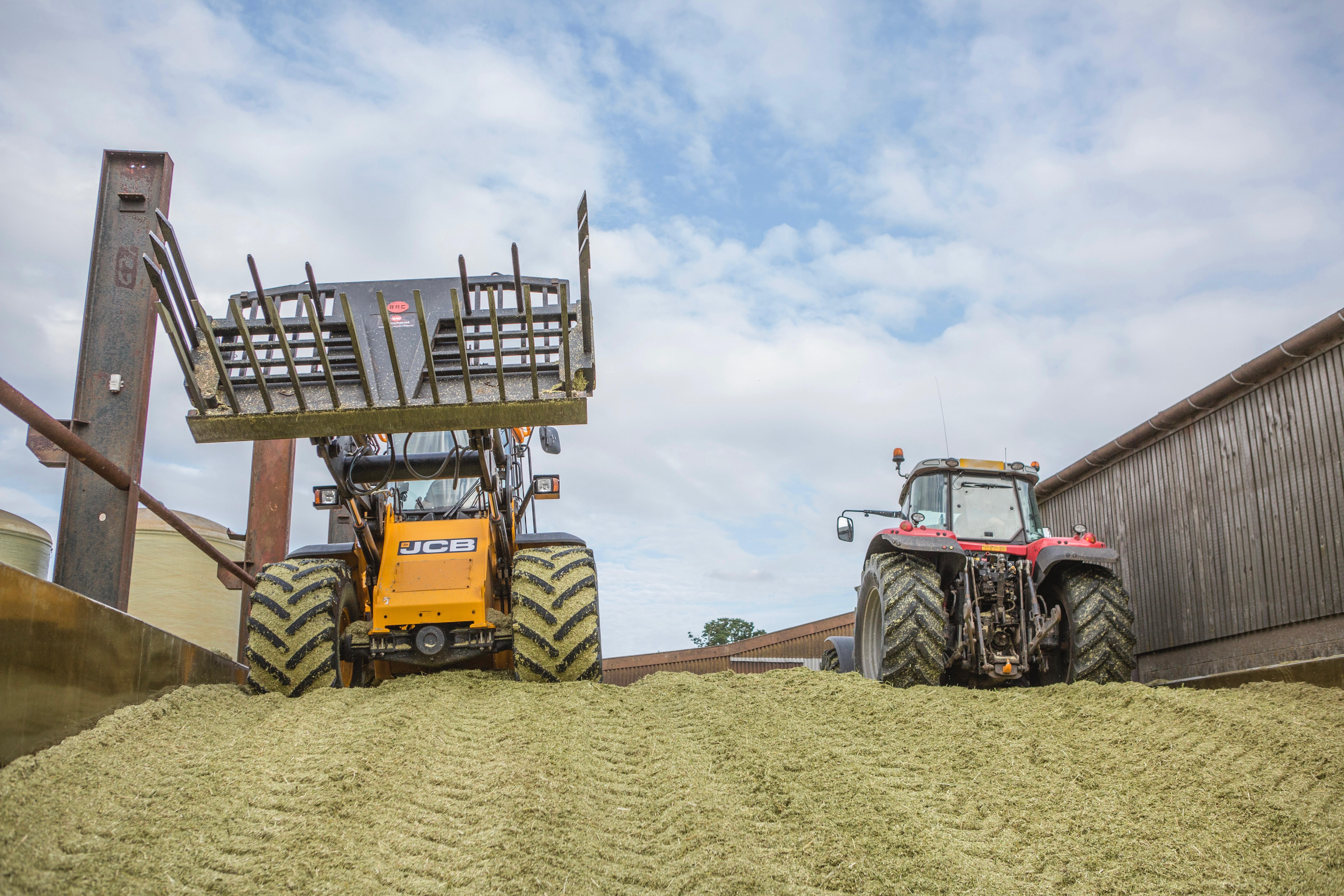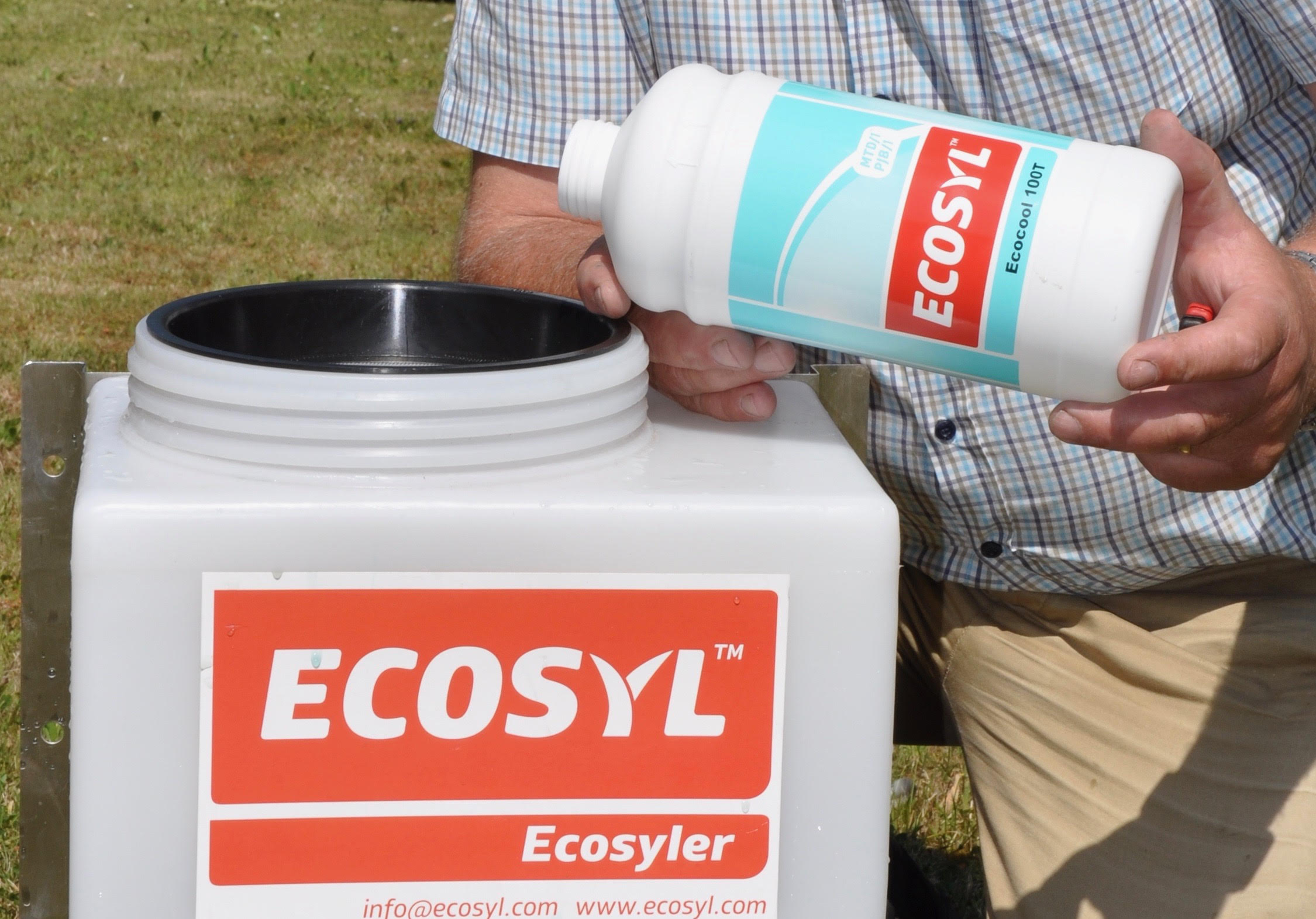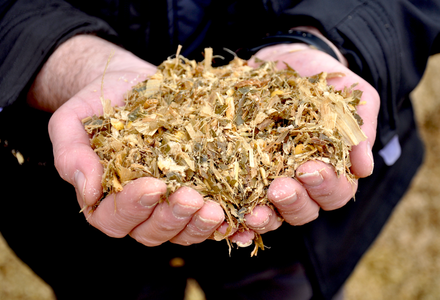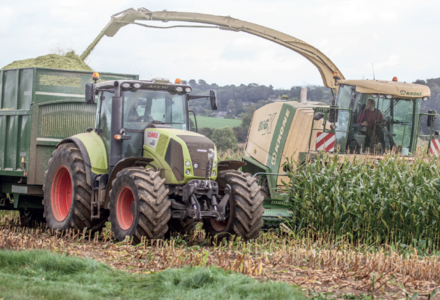Topping off this year’s maize preservation
27 September 2019
The upper parts of maize clamps are particularly prone to wastage and losses. After a good growing season, could these and other vulnerable areas be protected better?

Forage maize crops have had a pretty good growing season this year, report Volac silage experts.
Improving maize preservation
So, with enough energy per hectare of fresh maize for about 30,000 litres of milk production, assuming animal maintenance needs are already met, it’s well worth preserving as much of this potential as possible, they point out, from the top to the bottom of the clamp.
In a typical maize clamp, dry matter losses run at about 15%,” says Volac business manager for southern England, Ken Stroud. “Roughly half of this loss comes from silage heating, due to yeasts and moulds (aerobic spoilage). The other half, which is less obvious, comes from inefficient fermentation. However, DM losses from both problems can be much higher.
“In more vulnerable areas around the top of the clamp and shoulders, where it’s more difficult to the squeeze the air out, DM loss can reach 50%. Excluding air is important not just to reduce heating but also to improve fermentation,” he adds.
Preventing losses in the maize clamp
For every 1oC rise in clamp temperature, Mr Stroud says 0.23% DM is lost per day. But it’s not just DM at stake. There are also potential losses in feed quality and from cows rejecting unpalatable silage, he warns, plus the risk of mycotoxins from moulds.
There are several practical steps to help combat these problems. The first is better clamp consolidation. This is often an area where there’s room for improvement. Frequently, this is because there’s pressure to fill clamps too quickly, to keep up with the rate of trailers arriving from the field. But it can also be due to the operator simply not being aware of how much rolling is needed. Or, it may be down to a less effective clamp filling technique, or underestimating the weight of machinery required.
“Just like the rest of the clamp, the top and shoulders should be compacted to a density of 700 kg of fresh maize per cubic metre. This is difficult to achieve if you’re filling the clamp in a wedge. Instead, fill in a maximum of 15 cm horizontal layers, which is the most that can be consolidated effectively, then roll and repeat. A second machine on the clamp may be needed,” he adds.
Using a proven silage additive
Better consolidation not only improves preservation, it also allows more silage to fit in the clamp, says Mr Stroud, which is important because anything above the walls is difficult to consolidate properly. Another key to effective ‘floor to ceiling’ clamp protection is best practice additive application, he adds.
“Common mistakes I see are people either not ordering enough additive or simply not mixing up a final batch if what’s on the machine doesn’t quite stretch to the end of harvest. Either of these means the last few trailer loads going on the vulnerable top part of the clamp are untreated and less protected.
“With this season potentially a bumper harvest, calculate accurately how much additive you’ll need. For maize silage at £35/tonne, you don’t need to prevent much wastage before the additive more than covers its cost. A good additive should also have a shelf life of a couple of years. So any bottles you don’t use this harvest, you can use up next year.
If you apply the dual-acting additive Ecocool, you protect maize with two different bacteria: one that is highly efficient at fermentation, so you’re not relying on the background population of random bacteria present on the crop; and one that preserves the silage against the yeasts and moulds that cause heating.
It is also approved for ultra-low volume application, so you can apply it in low quantities of water with the appropriate applicator. You don’t need to mix it up in 200 litre drums.”

Find out more about Ecocool or download the full product brochure today.
Top tips to protect the top of your clamp
To further safeguard the vulnerable top and shoulders of the clamp, Mr Stroud advises incorporating salt into the top few inches as added protection against heating.
“If plants are stressed or conditions warm and moist before harvest, smuts and moulds can creep into crops, which compromises the preservation,” he notes.
The final step is to make the clamp airtight. Use side sheets on the walls, as polythene is less porous than concrete, ensuring that the side sheets extend all the way down to the ground and are big enough for plenty of overlap at the top.
“When the clamp is full, place an oxygen barrier film on top, pull the side sheets at least 1-2 metres over it, and finally seal with a single 1000-gauge or two 500-gauge polythene sheets pulled tight over the top.
“Place a woven sheet over this to prevent damage, then weight with mats, gravel bags, touching tyres or bales. Finally, cover with netting to stop birds pecking holes, and remember to control rodents.”
Growing maize for silage? Download our handy guide today to help you get the most from this valuable forage.


_listing.png?1568032707)